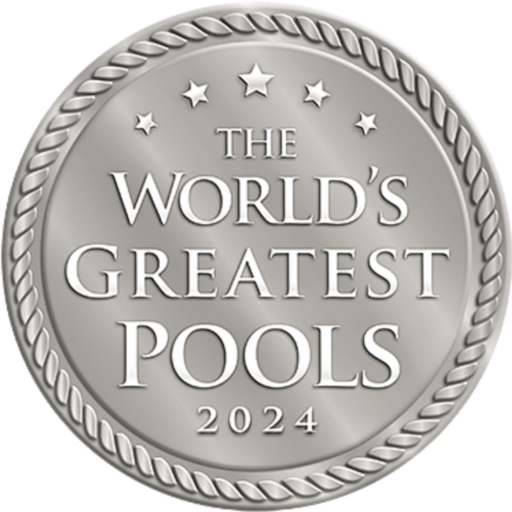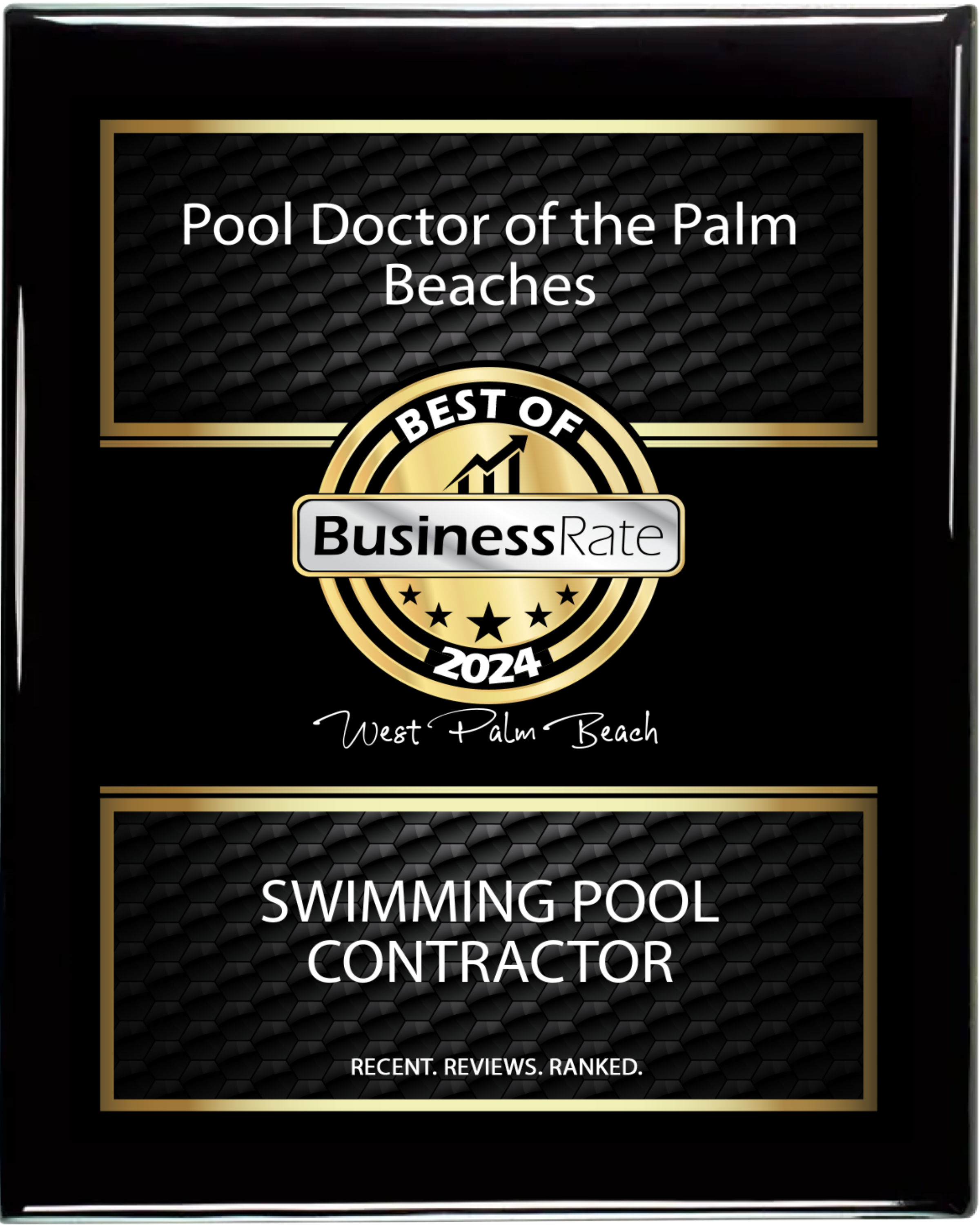To conserve water in your pool during drought conditions, install a high-quality solar or insulated cover to reduce evaporation by up to 95%. Monitor water levels closely, keeping them just above the skimmer opening, and conduct regular leak detection tests. Maintain proper chemical balance (pH 7.4-7.6, chlorine 1-3 ppm) to minimize the need for water changes. Install a variable-speed pump and automated timer system for ideal circulation during off-peak hours. These fundamental steps lay the groundwork for thorough drought management strategies.
Key Takeaways
- Install a high-quality insulated or solar pool cover to reduce evaporation by up to 95% and maintain consistent water temperatures.
- Monitor water levels regularly and promptly repair any leaks detected through routine testing to prevent unnecessary water loss.
- Use an energy-efficient variable speed pump and program it to run during off-peak hours to minimize water waste.
- Maintain proper chemical balance (pH 7.4-7.6) to reduce the frequency of water changes and backwashing needs.
- Install cantilevered deck materials and drought-resistant landscaping around the pool to capture and redirect splash-out water.
Essential Pool Cover Solutions to Reduce Evaporation
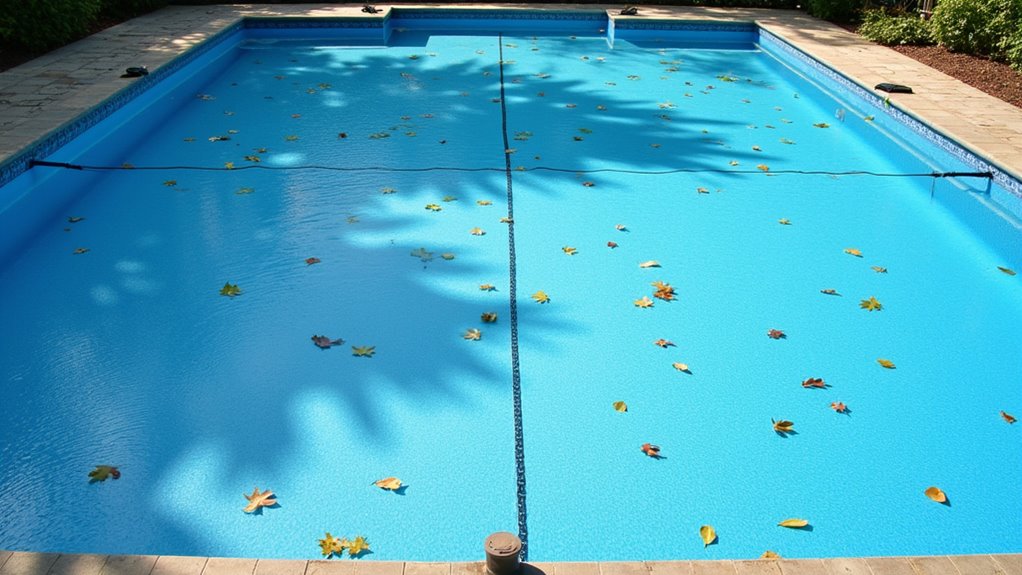
Three key types of pool covers serve as essential barriers against water evaporation, which can account for up to 95% of a pool’s water loss. The most basic option, mesh covers, blocks debris while allowing some water penetration. You’ll find these effective for minimal protection and easy maintenance.
Solar pool covers, featuring air-filled bubbles, provide dual benefits by reducing evaporation and heating your pool water through UV absorption. These covers can raise water temperature by up to 8 degrees Fahrenheit while cutting evaporation by 95%.
Insulated covers offer the highest level of protection through multiple layers of foam and vinyl. You’ll need to invest more initially, but these covers deliver superior performance by preventing heat loss and virtually eliminating evaporation. They’re particularly effective during off-season periods when your pool isn’t in use.
Smart Water Management Practices for Pool Maintenance
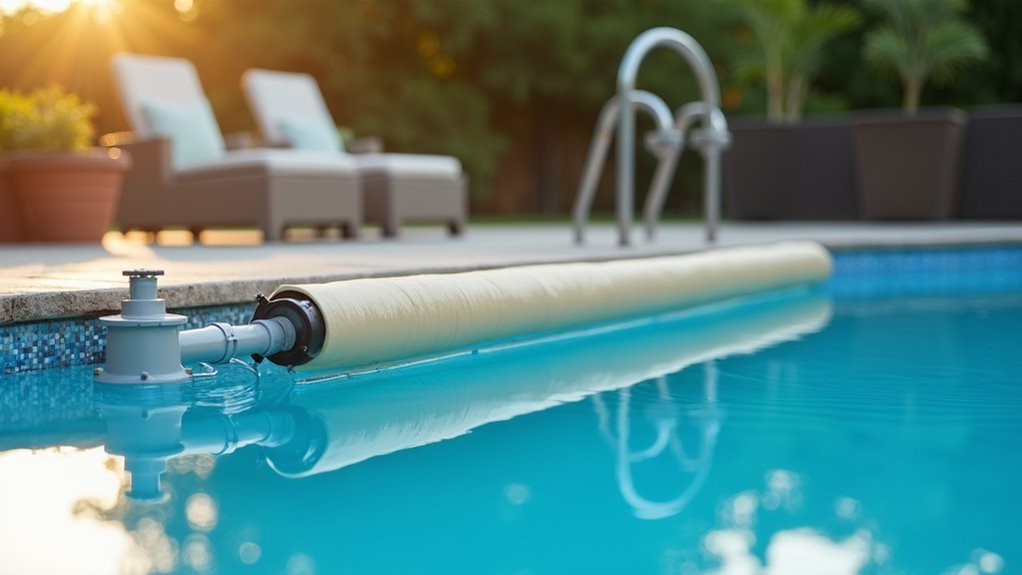
Beyond physical barriers like pool covers, implementing intelligent water management protocols can greatly reduce waste and enhance pool maintenance efficiency. Monitor your pool’s water level closely and adjust it to stay just above the skimmer opening, preventing unnecessary overflow. You’ll improve water saving techniques by conducting regular leak detection tests and promptly repairing any identified issues.
Implement efficient cleaning practices by backwashing your filter only when necessary, typically when pressure rises 8-10 PSI above normal. Use a pool vacuum that doesn’t require water discharge, and maintain proper chemical balance to reduce the frequency of water changes. Install a flow meter to track water usage and detect unusual consumption patterns. Consider upgrading to variable-speed pumps that allow precise control over circulation rates, reducing both water and energy waste.
Optimizing Your Pool’s Filtration and Circulation System
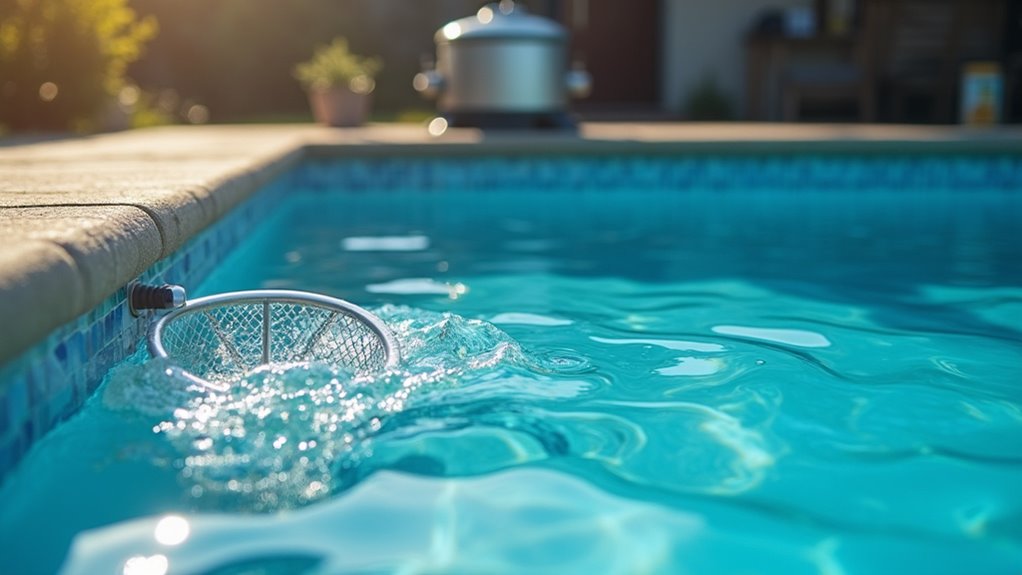
While many pool owners focus on water chemistry, an efficiently optimized filtration and circulation system serves as the foundation for water conservation. By upgrading to energy efficient pumps and implementing automated timers, you’ll reduce water waste while maintaining crystal-clear conditions.
To enhance your system’s efficiency and minimize water loss:
- Install a variable-speed pump that adjusts flow rates based on your pool’s specific needs
- Program your automated timer to run during off-peak hours, typically between 10 PM and 6 AM
- Clean your filter when pressure readings indicate a 8-10 PSI increase from the baseline
- Position return jets strategically to create a circular flow pattern, eliminating dead zones
These optimizations guarantee proper water circulation while consuming less energy and reducing the need for frequent backwashing or water replacement.
Chemical Balance Strategies to Minimize Water Loss
Maintaining proper chemical balance directly impacts how much water your pool loses through evaporation and backwashing. By enhancing pH levels between 7.4-7.6 and using chemical stabilizers effectively, you’ll reduce the frequency of water replacement and chemical treatments.
| Chemical Parameter | Ideal Range | Water-Saving Impact |
|---|---|---|
| pH Level | 7.4-7.6 | Reduces scale formation |
| Chlorine | 1-3 ppm | Extends filter cycles |
| Stabilizer | 30-80 ppm | Prevents chlorine loss |
| Alkalinity | 80-120 ppm | Maintains pH stability |
| Calcium | 200-400 ppm | Prevents surface damage |
Test your water chemistry twice weekly and adjust chemicals gradually. You’ll minimize water waste by preventing the need for frequent draining and refilling due to chemical imbalances. When using chemical stabilizers, maintain proper levels to protect chlorine from UV degradation, which helps reduce the frequency of chemical inputs and subsequent water loss.
Drought-Friendly Pool Upgrades and Modifications
To improve water conservation during drought conditions, several key pool upgrades can greatly reduce your water consumption. Consider implementing these proven modifications that combine efficiency with sustainability:
- Install a high-efficiency variable speed pump that allows you to optimize water circulation while minimizing evaporation through reduced turbulence
- Upgrade to a solar heating system with automated temperature control, which reduces water loss by maintaining consistent temperatures without excessive heating cycles
- Replace traditional coping with cantilevered deck materials that direct splash-out back into the pool rather than onto surrounding surfaces
- Transform your pool’s perimeter with drought-resistant landscaping using native plants and permeable hardscaping that captures and redirects any water loss back to the pool area
These strategic upgrades not just conserve water but also reduce your ongoing maintenance costs.
Frequently Asked Questions
How Long Can I Keep My Pool Closed During Drought Season?
You can keep your pool closed for 4-6 months during drought season, but proper pool maintenance is essential during this period. You’ll need to maintain chemical balance, run the pump 1-2 hours daily, and check the cover regularly for debris. Extended closure beyond six months isn’t recommended as it can lead to algae growth, staining, and equipment damage. These drought strategies help conserve water while protecting your pool’s structural integrity.
Can I Use Rainwater to Refill My Swimming Pool?
Yes, you can use rainwater to refill your swimming pool, but you’ll need a proper rainwater collection system and filtration setup. Make certain your catchment area is clean and equipped with debris filters. Before adding rainwater to your pool, you’ll need to test its pH and chemical composition. For effective pool maintenance, treat the collected rainwater with appropriate sanitizers and balance the chemistry just as you would with regular water sources.
Does Pool Shape Affect Water Conservation During Drought Conditions?
Your pool’s shape directly impacts water evaporation rates. Rectangular pool designs generally lose less water than irregular or freeform shapes because they have a smaller surface area relative to their volume. You’ll find that deeper pools with vertical walls conserve water better than those with gradual slopes. Moreover, pool designs with smaller perimeters minimize splash-out water loss, making them more efficient during drought conditions. Consider these factors when planning or modifying your pool.
What’s the Minimum Water Level Required for Pool Equipment Operation?
You’ll need to maintain your pool’s water level at least halfway up the skimmer opening (typically 4-6 inches below the pool deck) to prevent equipment damage. If the water drops below the skimmer level, your pump can pull in air instead of water, leading to pump cavitation and potential system failure. For most standard pools, this minimum water level guarantees proper circulation, filtration, and protection of your costly pool equipment.
Are There Local Regulations About Filling Pools During Water Restrictions?
You’ll need to check your specific local water district’s pool filling regulations, as they vary considerably by region. Many municipalities implement drought response policies that restrict or prohibit new pool fills and limit refilling of existing pools. Contact your water authority directly or visit their website to review current restrictions. Some areas require permits, while others might allow filling only during designated hours or mandate the use of water delivery services.
